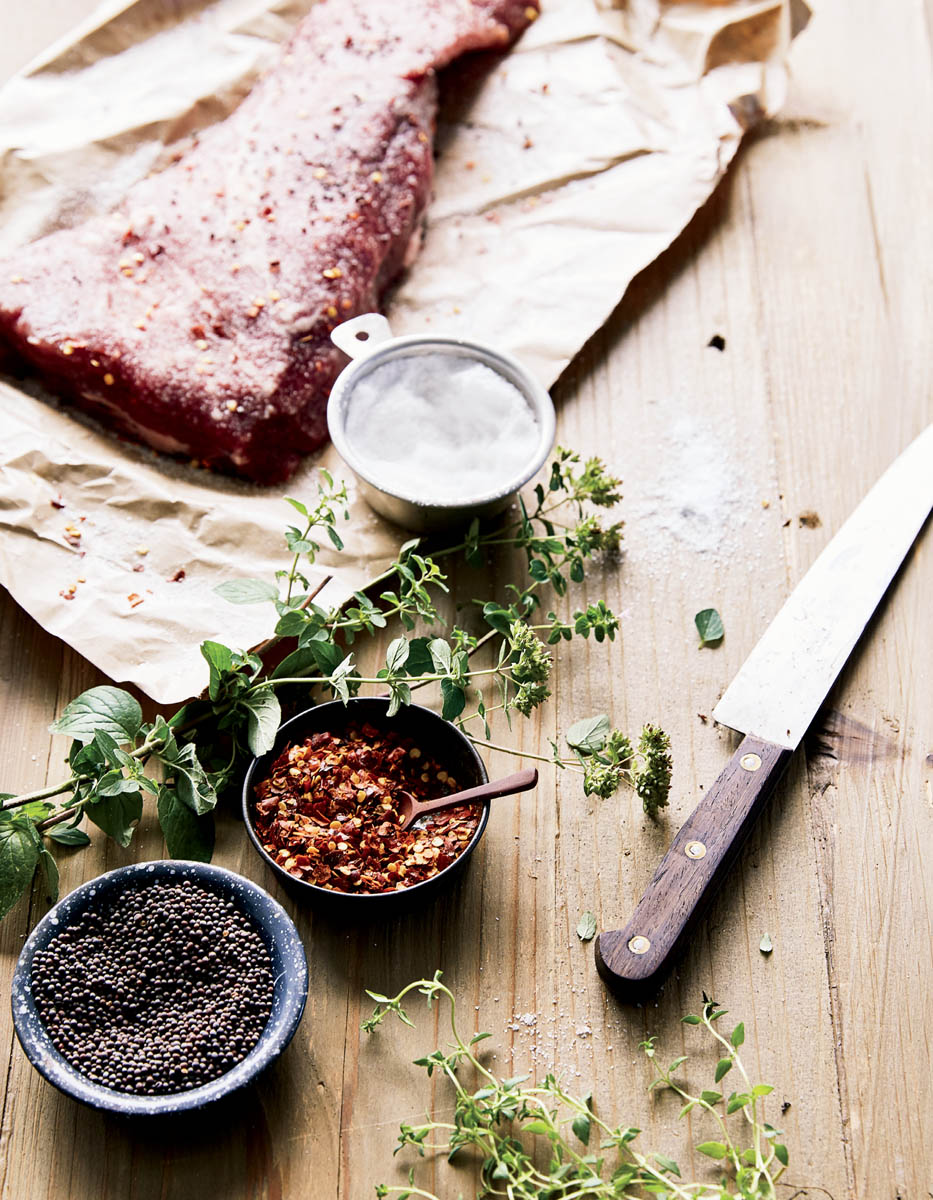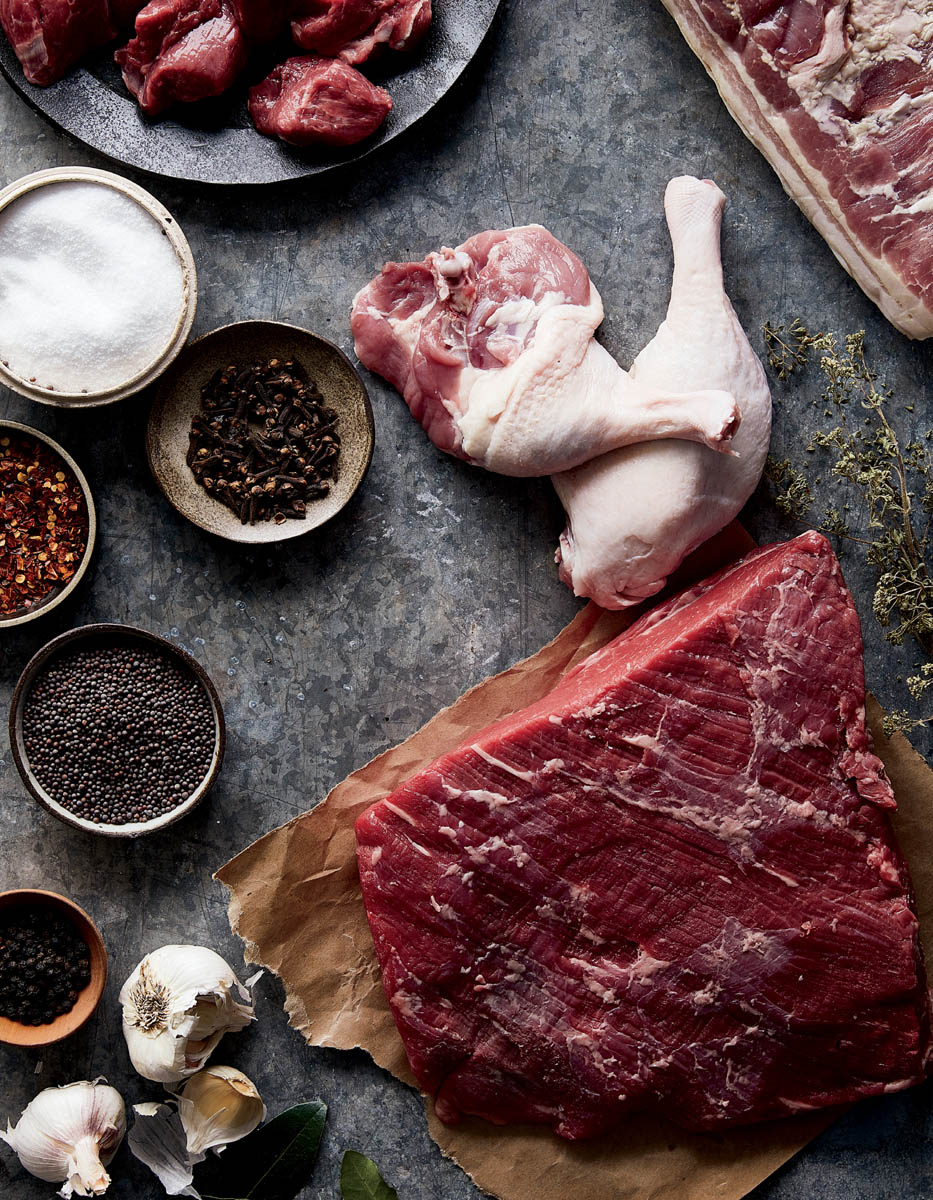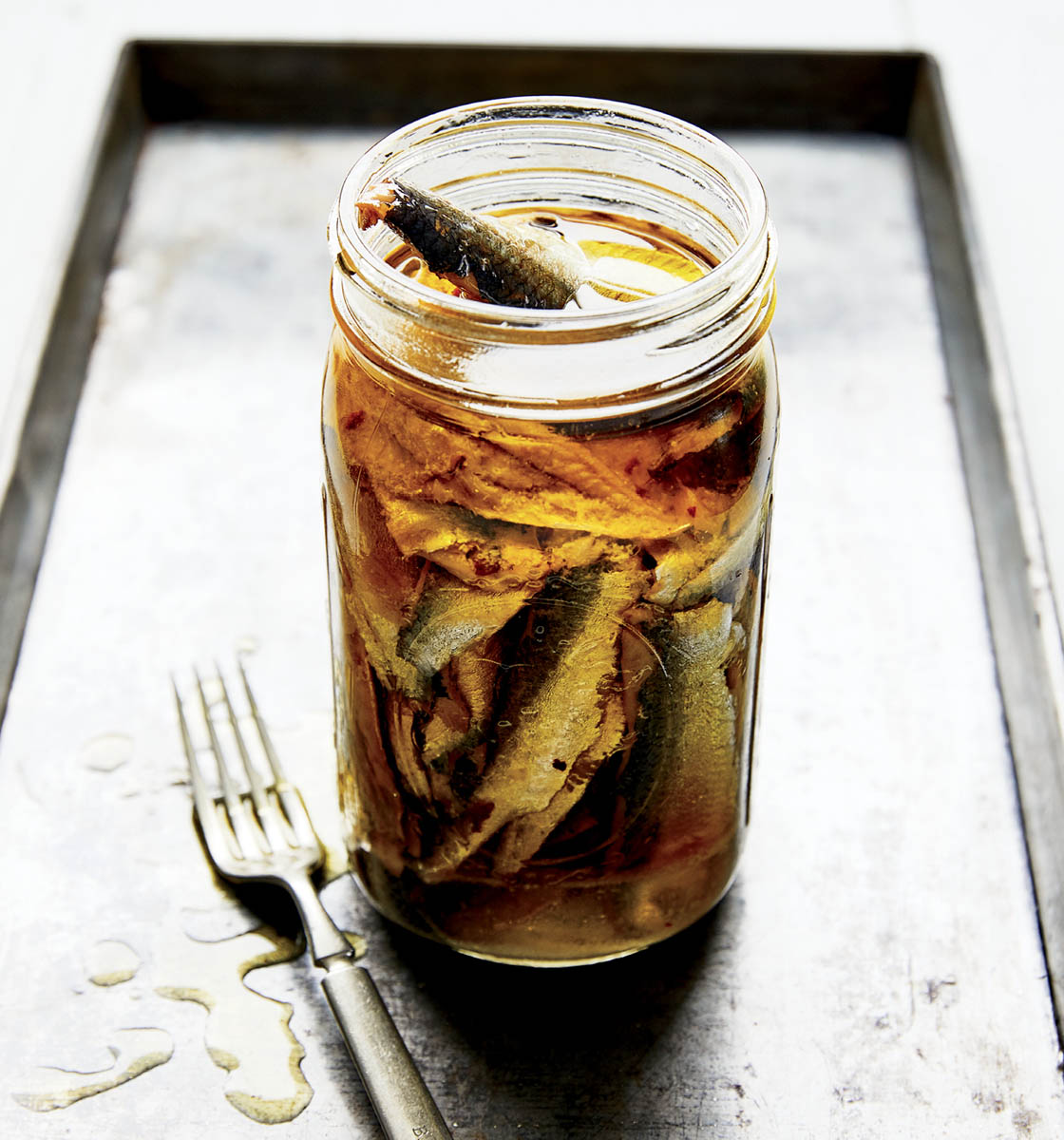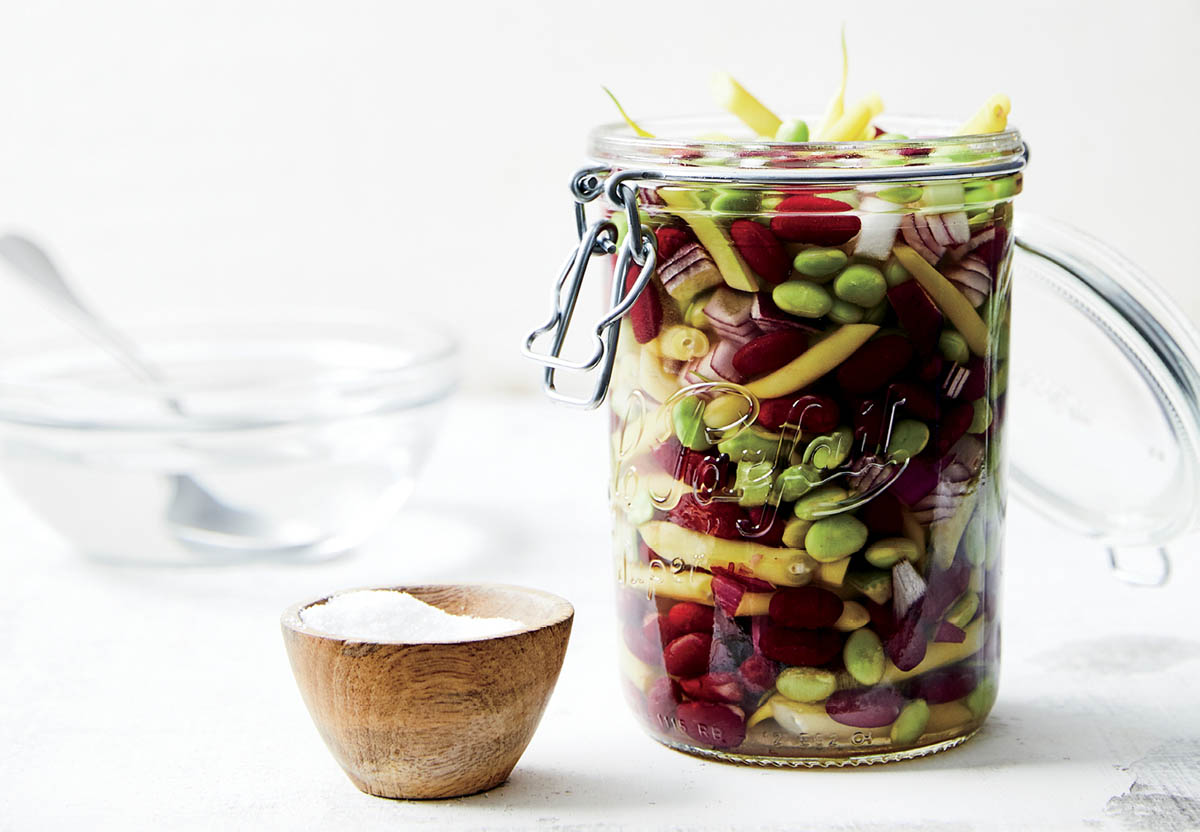

Food preservation most commonly conjures images of Ball jars packed with vegetables and fruit. Pickles and jam continue to enjoy tremendous popularity, and home cooks love to fill a jar for fun and flavor. But while pickled cucumbers and dried strawberries are delicious and refreshing, my quest for preserving real and satisfying food that’s ready to make into a meal at a moment’s notice has pushed me toward new food preservation frontiers. Even in my urban apartment kitchen, I have all of the space and tools required to craft preserved high-protein snacks and starters, as well as satisfying, full meals.
All food eaters are welcome in this quest, but particularly if you’re paleo, gluten-free, or dairy-free, in these pages you will find bold flavors that meet your dietary demands. What goes best with some of your favorite preserves like chutney and mustard? Beef, fish, duck, eggs, beans, nuts, and all of their delicious, portable, protein-packed flexibility once they have been pickled, brined, cured, smoked, and dried.
Rather than seeking out the chalky, badly flavored protein powders of yesterday’s bodybuilders, I am a protein seeker who loves food with real ingredients, and I’m willing to put in some kitchen time to craft something satisfying and delicious. For the most part, this book avoids using ingredients that are supplements or powders. I really prefer the taste of actual food.
This book is for home cooks who continue to value the sweat equity of their own food, made to savor and share, with ingredients that they trust and select themselves. (While provenance is important for cauliflower, for many it is far more important for sustainable fish, poultry, and meat.) Bragging rights for pickled tomatoes is one thing. Boasting about your own pickled fish is a step beyond.
Whether it’s beef or tofu, coppiette or bak kwa, your source for delicious protein snacking is in these pages.
According to the United States Department of Agriculture, protein-rich foods supply B vitamins like niacin, thiamin, riboflavin, and B6, along with vitamin E, iron, zinc, and magnesium. Protein is a building block for bones, muscles, cartilage, skin, and blood, as well as for enzymes, hormones, and vitamins. The USDA recommends a variety of foods for obtaining protein, including lean red meat for iron and 8 ounces of seafood weekly to help reduce the risk of heart disease. And though you have to dig a bit deeper for the information, they also recommend a varied protein intake that includes not just meat, poultry, and fish but also dairy, legumes, and nuts.
How much protein do you need per day? Good question. It depends who you are and what you do.
Pregnant women and nursing mothers need more protein, while the elderly and inactive require less. For general information, see the chart below. For specific information on your dietary needs, consult with your doctor or a nutritionist.
The recipes in this book are organized by type of protein (meat and game, poultry, fish, beans and nuts, and so on), and ingredients were selected based on the biggest protein bang for the buck.
|
Children |
2–3 years old |
2 servings |
|
4–8 years old |
4 servings |
|
|
Girls |
9–13 years old |
5 servings |
|
14–18 years old |
5 servings |
|
|
Boys |
9–13 years old |
5 servings |
|
14–18 years old |
61⁄2 servings |
|
|
Women |
19–30 years old |
51⁄2 servings |
|
31–50 years old |
5 servings |
|
|
51+ years old |
5 servings |
|
|
Men |
19–30 years old |
61⁄2 servings |
|
31–50 years old |
6 servings |
|
|
51+ years old |
51⁄2 servings |
|
|
One serving equals 1 ounce of meat, poultry, or fish, one egg, 1⁄2 ounce of nuts or seeds, 1 tablespoon of peanut butter, or 1⁄4 cup of cooked beans or tofu. Chart adapted from Daily Protein Foods Table, ChooseMyPlate.gov, U.S. Department of Agriculture. |
||

Meat and poultry. This is often the first food group that comes to mind when most people think of protein. Meat protein is an easy sell for those who eat meat — it’s flavorful, fast to cook, and delicious. If you’re a hunter, this is an especially alluring category because of the hands-on effort involved in skipping the butcher shop. There are many delicious, protein-packed reasons to choose meat. Lean, cooked beef and bison have about 9 grams of protein per ounce. Venison has about 10 grams. Lean pork has about 8 grams per ounce, as does the same weight of boneless, skinless chicken breast or turkey breast. Skinless duck breast, however, is a bird of a different feather at about 7 grams of protein per ounce. Bacon might not be the meat you should reach for every day, but it does have about 3 protein grams per slice. While there are a lot of great reasons to eat meat, there are also many reasons not to. Some consider it unethical. And particularly when it comes to larger beasts, like cows, it’s not the most environmentally friendly choice either. And it’s expensive. But if you are eating meat, I definitely recommend sustainable choices — grass-fed beef, hormone- and antibiotic-free — if it’s available and affordable.
Fish. An ounce of fresh tuna is very low in calories and has almost as much protein as beef — 8 grams per cooked ounce. Salmon and sardines are also great choices for protein content: 1 ounce of steamed or poached fish has 7 grams of protein. Pickled herring has about 4 grams per ounce. In general, the smaller the fish, the more sustainable it is as a food choice. I strongly suggest you eat fish with an eye toward ocean preservation, and the Monterey Bay Aquarium’s Seafood Watch program is an excellent resource for food fish choices.

Anchovies are first salted, then cured in vinegar, then preserved in oil.
Dairy. Cheeses vary, but feta cheese, used in some of the recipes here, has about 4 protein grams per ounce (cheddar has about 7 grams). Unsweetened whole-milk yogurt has 8 grams of protein per cup. And our friend the egg rolls in at 6 grams per large orb.
Legumes. What I find most interesting are the vegan sources of protein, of which there are many, including some surprises. Legumes, such as beans, are a wonderful source for protein. Black beans, chickpeas, and kidney beans have as much protein as beef per 1⁄2-cup serving, plus some nice fiber as a bonus. Tofu, made from soybeans, has 2 grams per ounce. Edamame, the soybeans from which tofu is made, have 12 grams per cup.

Adding edamame to a three-bean salad gives it a delicious protein punch.
Nuts and seeds. Peanuts have 8 grams of protein per ounce (and peanut butter has 7); almonds have 6, cashews have 5, and walnuts have 4. You probably knew nuts had protein, but did you know that pumpkin seeds have 9 grams of protein per ounce? Sesame seeds also add a little somethin’ somethin’ at 3 grams per ounce. Flax, hemp, and chia seeds, trendy as they are, have 3.5, 5, and 2.5 grams of protein, respectively, in just 1 tablespoon. Throw them into a smoothie!
Whether you’re a carnivore, an herbivore, or an omnivore, your kitchen is awash in ingredients for make-ahead protein snacks.